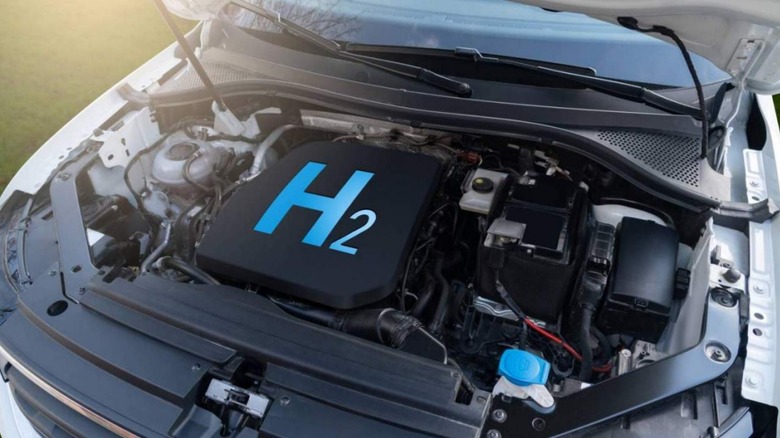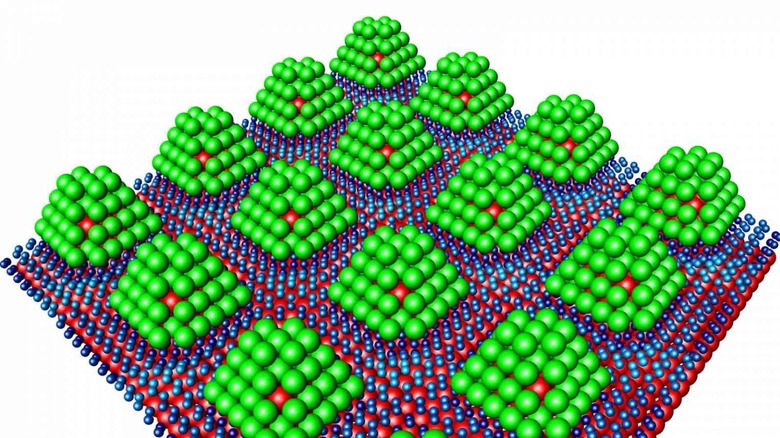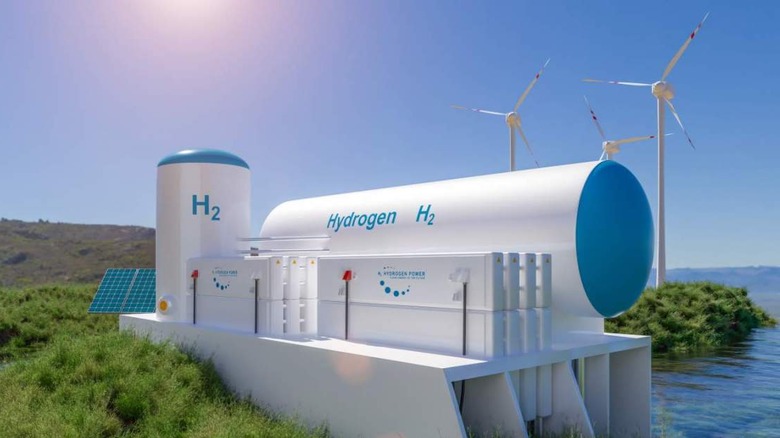This Hydrogen Fuel Breakthrough Sounds Sweet
Hydrogen-powered Fuel Cell Electric Vehicles (FCEVs) have something of a bad rap despite having some clear advantages over conventional EVs like those made by Tesla. In fact, Tesla CEO Elon Musk has variously called the technology "mind-bogglingly stupid," "a load of rubbish," and "fool cells" (via CNBC). While Musk may have a vested interest in promoting Tesla's preferred battery-based EV technology, he is undoubtedly standing on some solid ground when it comes to questions over FCEV technology that have yet to be satisfactorily addressed.
FCEVs are still in their infancy with just a fraction of the sales enjoyed by conventional EVs. There is a myriad of reasons for this but the leading reason is the lack of hydrogen gas fuel station infrastructure.
Without investment in the infrastructure, there is little likelihood of FCEV uptake and even if it is introduced at tremendous cost, there is no guarantee that people will buy FCEVs as they are considerably more expensive than regular EVs. The biggest advantage of FCEVs is that – in addition to being clean to run – once quickly refueled with hydrogen gas, they can be charged and ready to go in around just five minutes.
Palladium and hydrogen storage breakthrough
Another challenge facing the potential for FCEVs to achieve commercial success is the cost of storing hydrogen gas even in purpose-built hydrogen fuel stations. The gas either needs to be kept in pressurized tanks at up to 700 bar or it needs to be converted to liquid form, which requires cooling it down to minus 423 degrees Fahrenheit (minus 253 degrees Celcius). As you might imagine, this is not only costly, but it also requires a lot of energy which negates both the appeal of FCEVs and their environmental benefits.
Enter German research center Deutsches Elektronen-Synchrotron (DESY). DESY has discovered an approach to storing hydrogen in nanoparticles made from palladium – a precious metal – that can be easily extracted. Although it has been long known that palladium can absorb hydrogen like a sponge, the DESY approach differs by making the hydrogen easier to extract.
The process involves palladium particles only one nanometer across in a structure that resembles nut-coated marzipan chocolate. At the center of the structure is an iridium 'nut' around which is enveloped a layer of palladium (like marzipan), which then gets coated by a layer of hydrogen (the chocolate). A small amount of heat is all that is required to extract the hydrogen.
Scientists have a long way to go
While DESY's scientists have cooked up a tasty treat for fans of FCEVs, there is still a long way to go before breakthrough hydrogen storage and extraction techniques can be commercialized. DESY plans on scaling the technology to find out the storage densities that it can achieve. It is currently using graphene as a carrier for the 'nano-chocolates' (as DESY calls them), but plans on investigating other carbon structures.
However, DESY is optimistic that its approach will be able to hold substantial amounts of palladium which in turn means its approach will be able to store substantial amounts of hydrogen, without the downsides of current methods of hydrogen containment.


